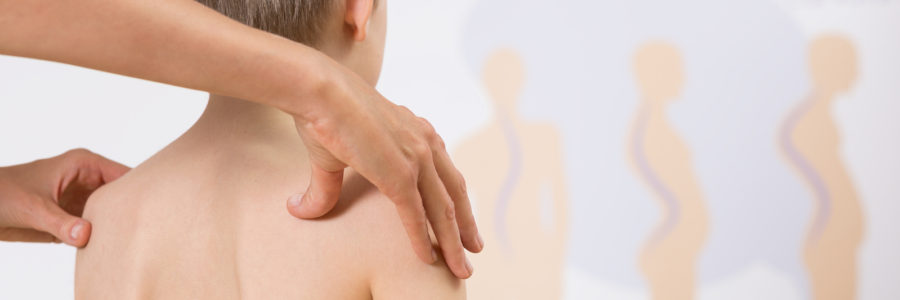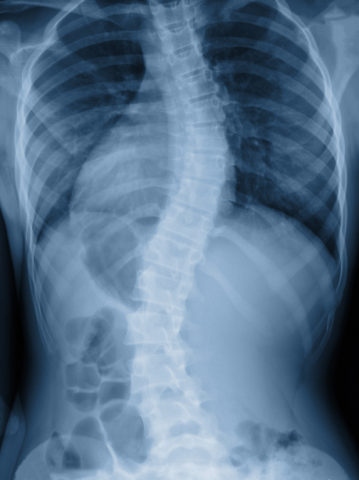
Over 30% of the American population has some form of scoliosis. You may have already helped clients who suffer from this condition in your regular bodywork or therapy practice. While traditional treatments vary, massage therapy is a safe addition to any client’s treatment plan.
What is Scoliosis?
Scoliosis is a condition of the spine. It causes the spine to curve left or right into a distinctive “S” or “C” shape. The spine compresses. This compression throws off the patient’s balance, and can contribute to a variety of health complications.
- Sore, painful muscles
- Difficult, stiff movement
- Hunch back
- Lung and heart problems
- Numbness
- Muscle weakness
If left untreated, the spine will continue to curve. This can lead to nerve, joint, and ligaments damage, as well as permanent disability.
What Causes Scoliosis?
Most scoliosis cases are classified as idiopathic. That means there is no known cause.
For about 20% of cases, doctors can point to a definite root condition. These cases are classified as structural or non-structural.
Structural scoliosis causes the spine to bend into a rigid curve that cannot be corrected. It is caused by underlying conditions like
- Cerebral palsy
- Muscular dystrophy
- Birth defects
- Tumors
- Infections
- Marfan’s or Down Syndrome, or similar genetic disorders
The spine of a patient suffering from non-structural scoliosis works normally. The characteristic curve is caused by injury, weakness, or illness of surrounding body parts. When the cause is treated, non-structural scoliosis generally disappears.
Scoliosis can also be developed while still in the womb. Congenital damage to growing vertebrae can cause the spine to curve, not divide properly, or not grow completely. Some patients with congenital scoliosis are not diagnosed until they are between the ages of 10 and 15. During this time, many children go through several growth spurts, which makes structural malformations more noticeable.
Degenerative scoliosis is caused by the wearing of joints and discs in adults. Their damaged joints cause the surrounding muscles to strain, which leads to a curved spine.
Massage Therapy for Scoliosis Patients
While scoliosis massage cannot correct curved or twisted bones, including the spine, it can help clients reduce pain and increase mobility.
- Massage relaxes muscles that are pulled out of place by shifted bone structures, which can significantly calm tight, uncomfortable sensations.
- Deep tissue techniques increase blood circulation and break up scar tissues, which makes it easier for patients to move freely.
- Patients who receive massage prior to chiropractic or neuromuscular therapies report better results from these treatments.
- Massage is known to soothe the mind as well as the body. A decrease in mental stress is linked to a better ability to deal with chronic pain issues.
Early and regular scoliosis massage therapy, in conjunction with standard medical treatments like exercise and the use of a brace, can help scoliosis patients avoid complicated surgeries.
There is no cure for scoliosis. However, it is highly manageable. The goal of treatment is to reduce the progression of spine curvature, reduce discomfort, and restore or improve mobility. Scoliosis Massage therapy can help your client achieve these goals more quickly than with standard treatments alone.

Kinesiology Taping in a Massage Practice
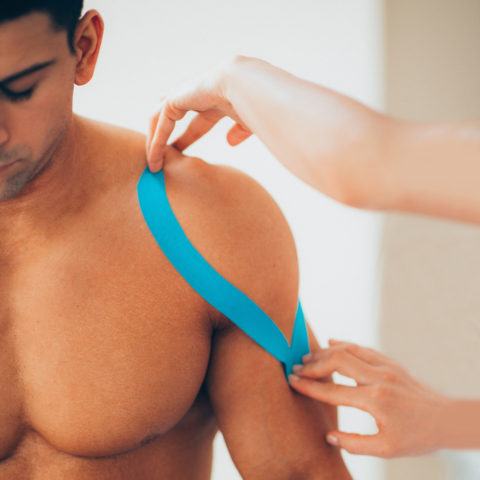
Since the 1970s, athletes have been using kinesiology taping to help them heal faster and build stronger muscles. Therapists have recently started using taping methods to bring those same benefits to their clients. Massage therapists can use taping to prolong relief and increase the body’s natural ability to heal itself.
What is Kinesiology Taping?
Kinesiology studies the body, and how it uses each part to move. Using knowledge of physiology, biomechanics, and psychology, the kinesiologist seeks to improve strength and muscle condition.
Kinesiology tape is a thin, stretchy fabric that adheres to the skin with acrylic adhesives. The adhesive itself is mild on the skin but very strong. The tape is waterproof and can stay in place up to five days. Usually made of brightly colored cotton, it has the same thickness and elasticity of healthy skin. It is designed to not cause any pinching, binding, or restrictions.
When applied to the skin, the tape gently lifts surrounding skin, allowing for a better flow of interstitial and lymph fluids. These fluids help remove dead cells and other waste caused by injury or a hard workout. They also deliver vital nutrients that cells need to repair themselves.
Interstitial fluids are also responsible for facilitating intercellular communication. When muscles cells are able to easily send and receive the electrical impulses that stimulate muscle movement, coordination and flexibility are dramatically increased.
Benefits of Taping
When applied around problematic joints and muscles, taping increases the healing and pain relieving properties gained from other therapy methods.
- Reduce painful inflammation by allowing the removal of cellular waste.
- Reduce pressure on nerve endings by lifting the skin away from pain receptors.
- Relax hypertonic muscles that make proper movement and posture impossible.
- Revive dying or inhibited muscles by restoring needed nutrients and fluids.
Taping allows the body to repair cell damage caused by injury. This allows muscles to restore or improve strength and proper function.
Kinesiology tape is a useful addition in the treatment of many common disorders.
- Sprained or strained muscles and ligaments
- Bruising
- Joint realignment and instability
- Rounded shoulders or spine
- Recently healed fractures
- Tendonitis
- Arthritis
- Fibromyalgia
Taping and Massage Therapy
Patients with chronic conditions benefit most from a combination of massage therapy and taping. When tape is applied after massage:
- Muscles that have been stretched and warmed by massage will stay loose longer.
- The body can remove lactic acid more easily, which decreases soreness after deep tissue techniques.
- Softens scar tissue and fascial adhesions so future sessions can be more productive.
- The natural pain relieving ability of massage will last longer.
- Added stability will keep muscles from moving out of alignment.
Tape can be safely applied to any body part. Different application methods encourage pain relief, structural support, and other therapeutic goals.
Kinesiology taping is an effective addition to any physical therapy routine. It can be used to treat a variety of musculoskeletal disorders and injuries in a noninvasive manner. When therapists add taping as a final touch to their therapy process, clients increase healing, flexibility, and muscles strength while reducing pain, swelling, and possible injury.

Carpal Tunnel Syndrome: What is it? And How Do I Relieve it?
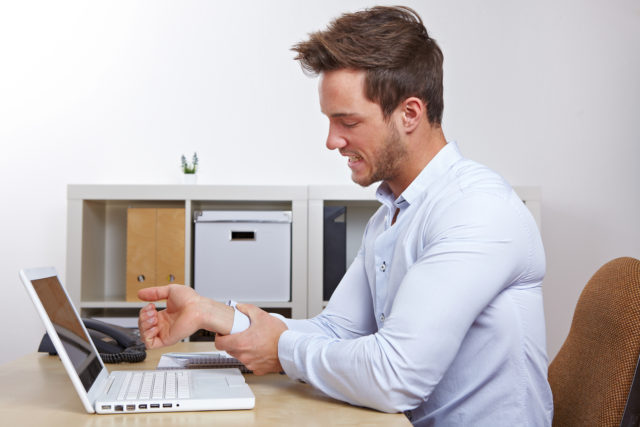
In our fast-paced, technology-addicted world, Carpal Tunnel Syndrome is a common complaint. The stiff muscles and shooting pain sufferers experience can have a significantly negative impact on daily life. As a professional therapist or bodyworker, it’s likely you will work with a client who has Carpal Tunnel Syndrome. Understanding this increasingly common condition will allow you to help your clients achieve maximum relief.
What is Carpal Tunnel Syndrome?
Carpal Tunnel Syndrome occurs when pressure is exerted on the median nerve that runs through the arm and wrist. This nerve controls motion and feeling in all digits except the little finger. When the nerve reaches the wrist, it runs through a narrow structure of bone and ligament called the carpal tunnel. Constant pressure on the nerve causes it to press against the bony parts of the structure. If left untreated, the nerve will sustain damage that can cause a variety of symptoms.
- Numbness
- Loss of muscle strength
- Tingling
- Pain in fingers, hand, or forearm
- Many sufferers first notice their symptoms at night.
Getting a Diagnosis
As always, patients should seek an official diagnosis from their primary medical physician. The doctor will start with a medical history. People with arthritis, hypothyroidism, and diabetes are at higher risk of developing the condition. The doctor will ask about recent injuries or accidents affecting the head, shoulders, arms, or hands. They will also examine your daily routine. Those with jobs that require small, repetitive movements of the hands and wrists have a greater chance of their symptoms being caused by Carpal Tunnel Syndrome.
The doctor then performs a physical examination. They will check muscle strength, sensation (the ability to feel), and the general appearance of the head, neck, shoulders, arms, wrists, and hands. Some specialists may order blood or nerve tests to verify results.
Traditional Treatment Methods
Depending on the severity of symptoms, conventional treatment options for Carpal Tunnel Syndrome vary. Milder symptoms can often be treated effectively at home.
- Stop any activities that may be causing symptoms. If that is not possible, try to rest your wrists and hands often.
- Place an ice pack on wrists for 10-15 minutes at a time up to 2 times per hour to reduce discomfort.
- N-SAIDs, like Ibuprofen or Naproxen Sodium, reduce painful swelling.
- Wearing a wrist splint while sleeping can lessen pressure on the median nerve.
If symptoms are allowed to progress, more severe interventions may be necessary. Powerful anti-inflammatory medications, called corticosteroids, can be prescribed in pill form or injected directly into the wrist. While these medications can significantly reduce pain associated with Carpal Tunnel Syndrome, they do not provide permanent relief. Surgery is an option for the most advanced cases.
Other Self-Treatment Options
There are some simple steps everyone can take to decrease the intensity of symptoms and frequency of attacks caused by Carpal Tunnel Syndrome.
- Regular Stretching
- Get treated for contributing conditions.
- Maintain a healthy weight.
- Quit smoking.
- Exercise regularly.
In addition to lifestyle changes, sufferers should take measures to protect their wrists and hands.
- Keep wrists elevated when using a keyboard.
- Keep shoulders relaxed and at the sides while typing or working.
- Use the whole hand to grip items rather than just fingers.
- Switch hands during repetitive motions.
Massage Therapy for Natural Pain Relief
Certain massage techniques have been proven to relax tight muscles and fascia in the arm and shoulder and reduce pressure on the median nerve. For clients with Carpal Tunnel Syndrome, a muscle specific massage will help address holding patterns associated with repetitive use while also increasing blood flow to the affected region. Leaving your client feeling loose, refreshed, and hopefully pain-free.
Contact us today to learn more about how massage therapy can be an effective treatment for carpal tunnel syndrome.
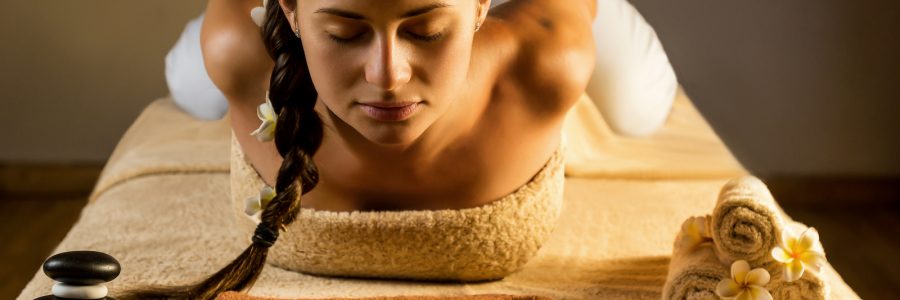
Which Massage to Choose: Massage Types and Techniques
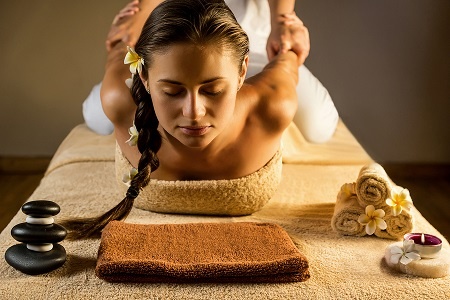 Every person on this planet could benefit from receiving a massage. It’s true! Even for our nimble athletes, the rigors of training push their muscles to the limits. To heal up quicker, massage can do the trick. But more than our athletes, our pregnant mothers, our injured grandmother, those with constant stress, and those looking to maintain their aging bodies long into the golden years. Massage helps people to feel and live better and to do this work is an important calling.
Every person on this planet could benefit from receiving a massage. It’s true! Even for our nimble athletes, the rigors of training push their muscles to the limits. To heal up quicker, massage can do the trick. But more than our athletes, our pregnant mothers, our injured grandmother, those with constant stress, and those looking to maintain their aging bodies long into the golden years. Massage helps people to feel and live better and to do this work is an important calling.
When attending the Northwest Academy for the Healing Arts, students learn a variety of massage techniques. With courses led by instructors who care about you learning the proper techniques, you will be able to provide the following massage therapies for clients in your very own clinic:
Swedish Massage- This style focuses on relaxing the entire body by using long strokes along the muscles to get the blood flowing back to the heart. It helps the body by increasing oxygen in the bloodstream and releasing toxins.
Deep Tissue Massage- The primary focus is on the deepest layers of muscle tissue, tendons, and areas nearest to the bone. For people who suffer from chronic muscle tension, Deep Tissue massage therapy can do wonders for the comfort and long term health.
Myofascial Release- For those who suffer from pain and limited motion in the body, myofascial release can help reduce the discomfort. This treatment is performed by applying gentle sustained pressure into the connective tissue, known as fascia.
Injury Treatment Massage- By using combination of Swedish, deep tissue, and orthopedic technique, more oxygen and nutrients can be delivered into injured tissues, while releasing tissue restrictions thus aiding in the healing process. The improved circulation and relaxed muscles will get people back to feeling great again after enduring the challenge of an injury.
Pregnancy Massage– Those mommas out there are working hard and their body’s feel the stress of all of it. This causes pain, discomfort, numbness, not to mention the headaches and nerves of even having a baby! Gentle massage can help relieve all of those issues and provide some peace of mind to Mom as she prepares to bring her newborn into the world.
Manual Lymphatic Drainage- This massage technique encourages the drainage of the lymph, whose purpose is to carry the waste products in our body away from the tissues.
At the Northwest Academy, you will also learn the basics of anatomy and physiology, kinesiology to understand the mechanics of motion and joint anatomy, and more. You’ll also be taught the skills and given the first-hand experience of running and operating a clinic. The goal and mission of the Northwest Academy is to support you in your endeavor to passing the national exams and receiving your massage therapy license in Washington State. We aim to do that by providing you the lowest student to teacher ratio in the area, first-hand experience, mentoring and guidance as you learn the ropes of running a clinic, and even continuing education opportunities to keep you informed on the advancements in the field.
To be a licensed massage therapist is a real honor as you share in the lives of so many. The career can give you a balanced lifestyle and the ability to shape your own day. We want to help you get there.
Now enrolling for all massage school campuses – Apply Now!
Seattle Massage School | Tacoma Massage School | Bellingham Massage School
![]()
Infant Massage: Nurturing the Emotional and Physical Connection
 As widespread understanding of the benefits of massage therapy become commonplace, the art and science of the craft are furthered and more uncommon aspects of it are explored. Infant massage is one such branch of massage therapy that has garnered positive criticism for its multi-beneficial effect. Not only does massage therapy help to calm an infant, it serves to strengthen the child’s humanistic tendencies and also aids in healthy adolescent development. The full scientific consensus on infant massage is still pending a lot of analysis and research, but that’s not stopping practitioners and mothers alike from boasting its effectiveness.
As widespread understanding of the benefits of massage therapy become commonplace, the art and science of the craft are furthered and more uncommon aspects of it are explored. Infant massage is one such branch of massage therapy that has garnered positive criticism for its multi-beneficial effect. Not only does massage therapy help to calm an infant, it serves to strengthen the child’s humanistic tendencies and also aids in healthy adolescent development. The full scientific consensus on infant massage is still pending a lot of analysis and research, but that’s not stopping practitioners and mothers alike from boasting its effectiveness.
Understanding Infant Massage
The anatomy of an infant and the ailments for which they might need massage therapy vary greatly from that of an adult. A seasoned athlete who may need massage work for sore or tense muscles is going to require a vastly augmented amount of force and precise physical targeting, as where the key for infant massage is soft and gentle.
- The Technique necessary for a safe and effective practice of infant massage requires consideration and at least some training. An infant’s anatomy is much more underdeveloped than an adult, therefore, errors such as the application of too much force could have a negative effect on the child’s physical development. Investing in a massage therapy course before attempting infant massage is crucial to developing a good technique with a solid foundation. Massage therapy for an infant requires paying close attention to how the baby reacts, this will tell you if they find your current technique painful or uncomfortable. Further concentration into the specifics of infant massage is now possible due to its popularity.
- The Benefits of infant massage are both immediate and long-term. The soothing touch can calm and relax babies, and also aid in putting them to sleep. A massage can help reduce crying and invariably creates a significant and important bond between the infant and others, most importantly the child’s mother and father. A long-term benefit of infant massage is that it can help maintain a healthy balance of the infant’s stress control hormones (according to the Mayo Clinic.) As with any infant care practice, if the massage is not performed correctly it could be detrimental. For example, massaging an infant too soon after eating can cause the baby to vomit.
Infant massage therapists benefit from a growing career that is heavily lauded for its positive effect on others. An investment in an education in massage therapy will prepare you embark on this field, and as the practice of, and interest in, infant massage therapy continues to grow so do the job opportunities. Whether it be for personal use with your own family or as a prospective career the time to act is now.
Click Here: For more information about infant massage in seattle massage schools
![]()





